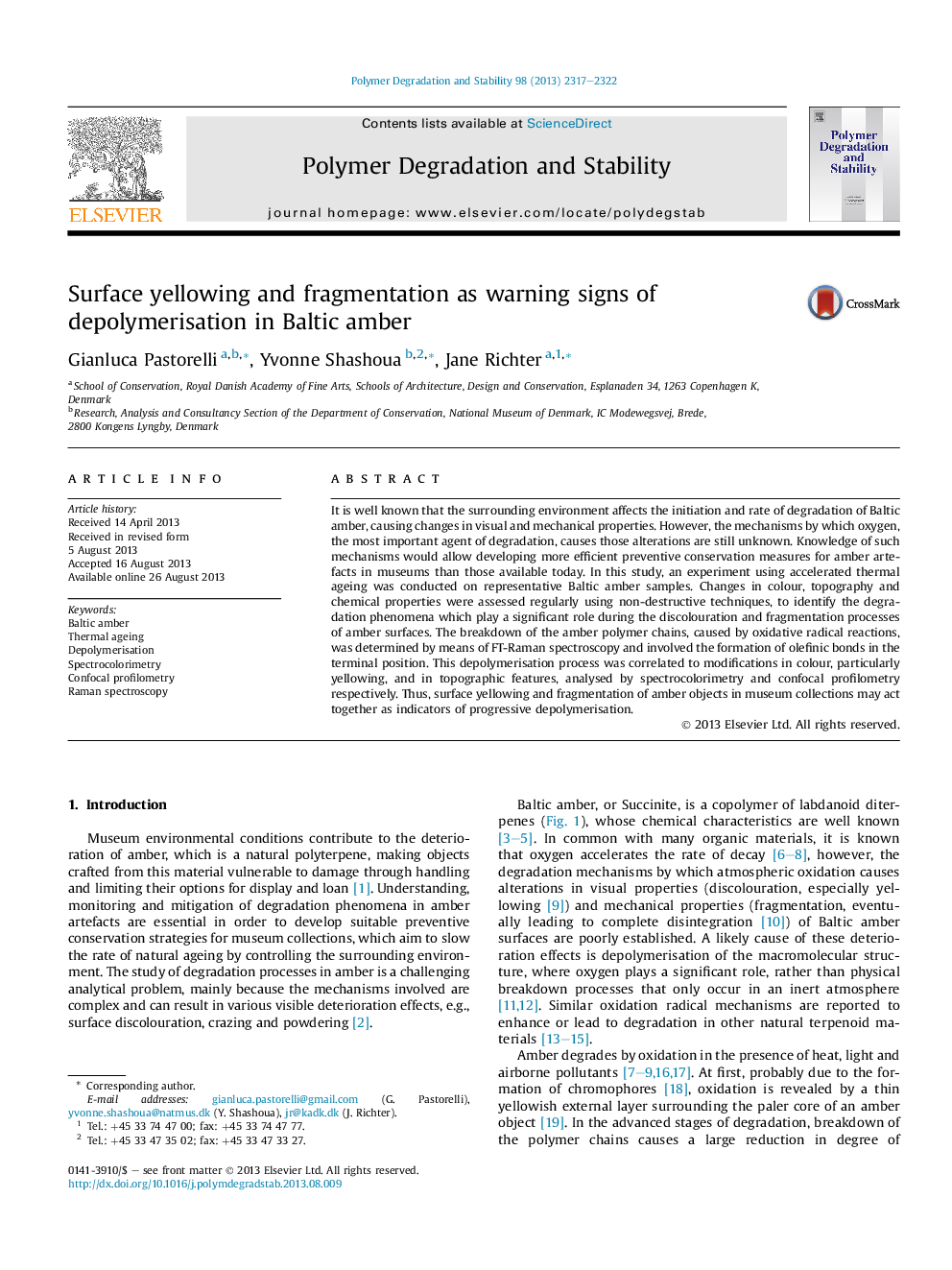| Article ID | Journal | Published Year | Pages | File Type |
|---|---|---|---|---|
| 5202272 | Polymer Degradation and Stability | 2013 | 6 Pages |
Abstract
It is well known that the surrounding environment affects the initiation and rate of degradation of Baltic amber, causing changes in visual and mechanical properties. However, the mechanisms by which oxygen, the most important agent of degradation, causes those alterations are still unknown. Knowledge of such mechanisms would allow developing more efficient preventive conservation measures for amber artefacts in museums than those available today. In this study, an experiment using accelerated thermal ageing was conducted on representative Baltic amber samples. Changes in colour, topography and chemical properties were assessed regularly using non-destructive techniques, to identify the degradation phenomena which play a significant role during the discolouration and fragmentation processes of amber surfaces. The breakdown of the amber polymer chains, caused by oxidative radical reactions, was determined by means of FT-Raman spectroscopy and involved the formation of olefinic bonds in the terminal position. This depolymerisation process was correlated to modifications in colour, particularly yellowing, and in topographic features, analysed by spectrocolorimetry and confocal profilometry respectively. Thus, surface yellowing and fragmentation of amber objects in museum collections may act together as indicators of progressive depolymerisation.
Related Topics
Physical Sciences and Engineering
Chemistry
Organic Chemistry
Authors
Gianluca Pastorelli, Yvonne Shashoua, Jane Richter,
